Alphabet Recognition Cursive Letters Worksheets for 9-Year-Olds
7 filtered results
-
From - To
Explore our engaging Alphabet Recognition Cursive Letters Worksheets designed specifically for 9-year-olds! These resources enhance children’s handwriting skills while helping them identify and connect cursive letters with their corresponding print forms. Our worksheets encourage fun and interactive learning, featuring various activities such as tracing, writing, and matching letters in cursive. These exercises not only improve alphabet recognition but also boost fine motor skills and confidence in writing. Perfect for home or classroom use, these worksheets align with educational standards to provide an effective learning experience. Help your child master cursive with our expertly crafted and visually appealing worksheets today!
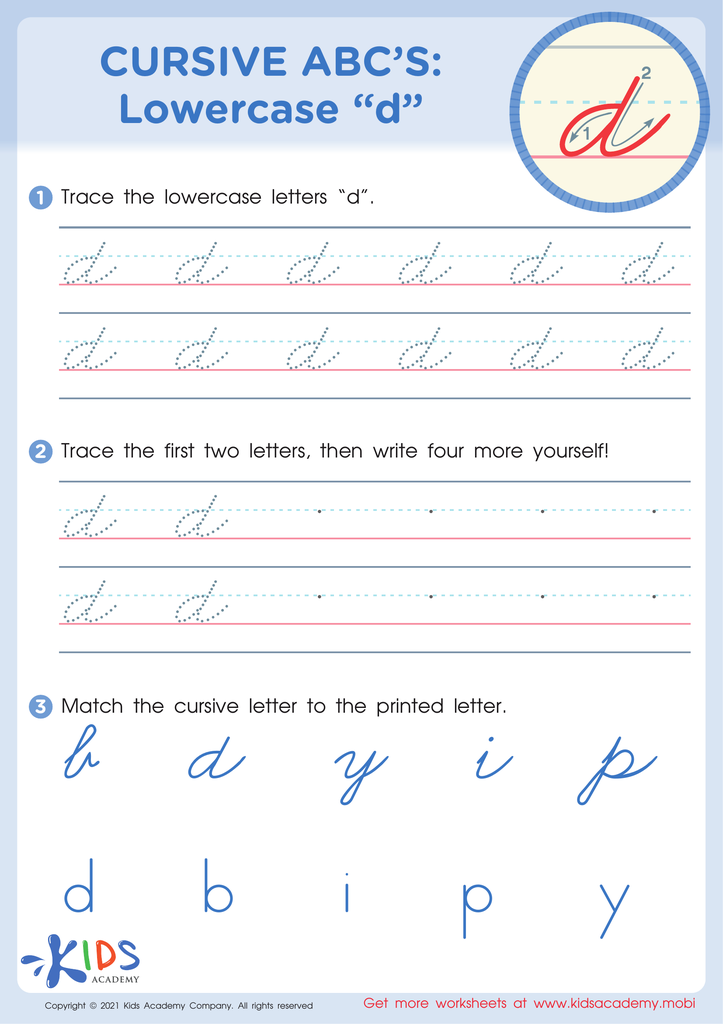

Cursive ABCs: Lowercase d
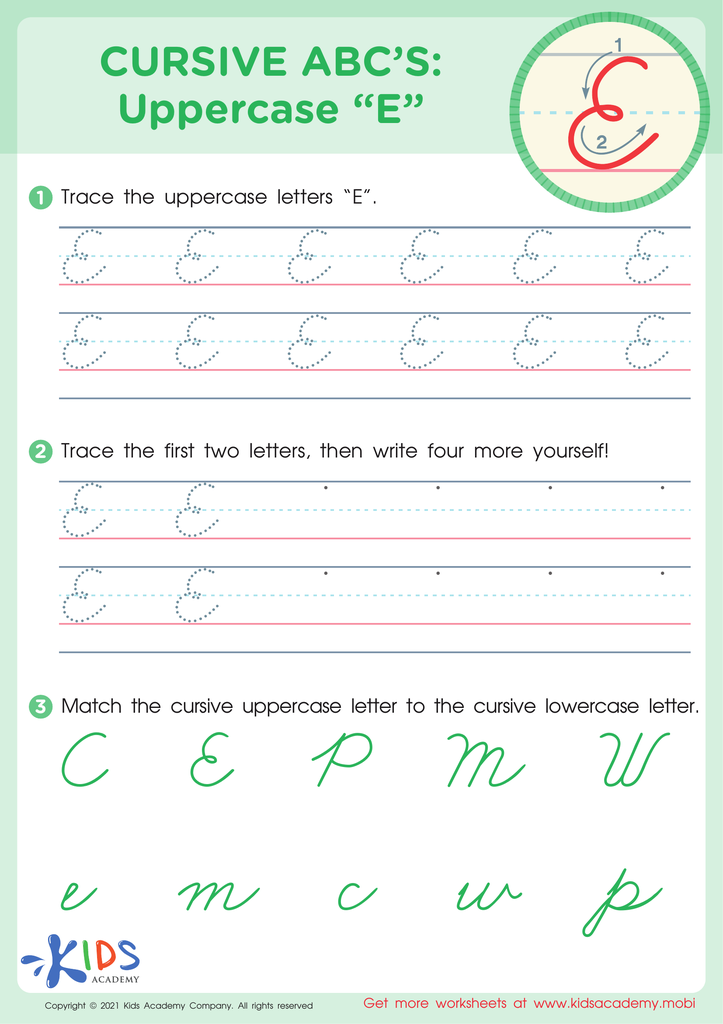

Cursive ABCs: Uppercase E
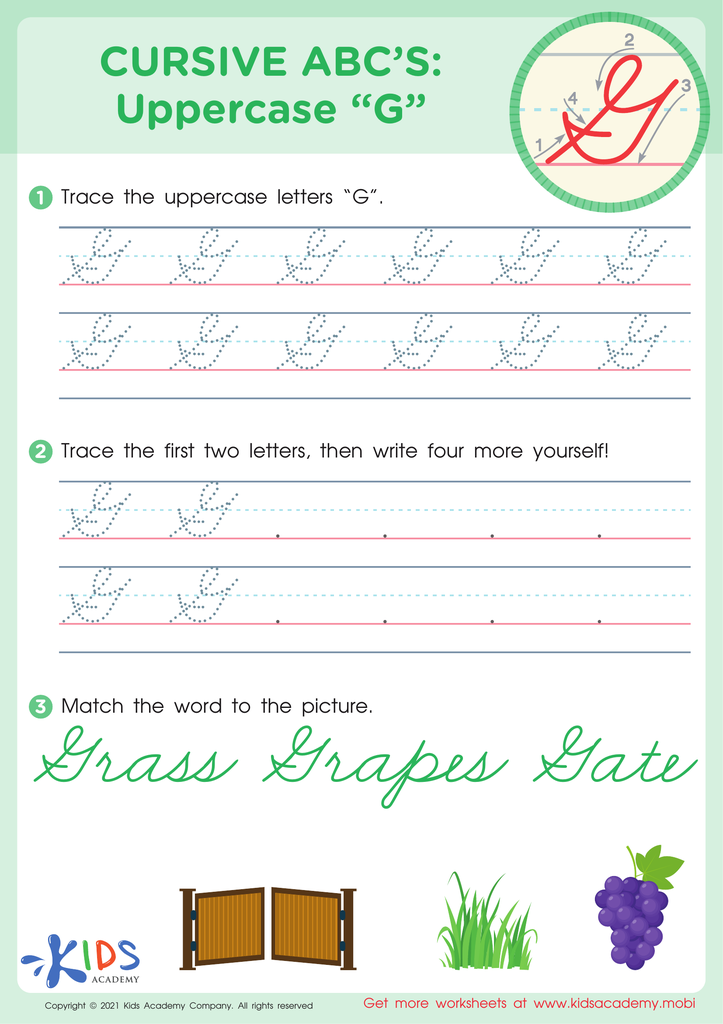

Cursive ABCs: Uppercase G
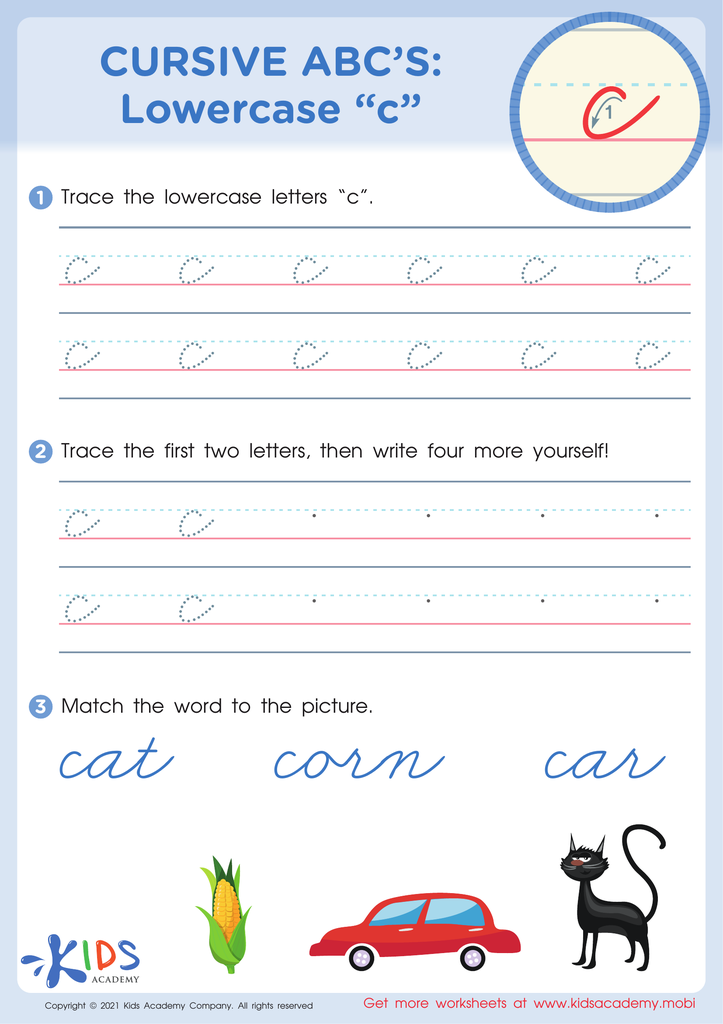

Cursive ABCs: Lowercase c
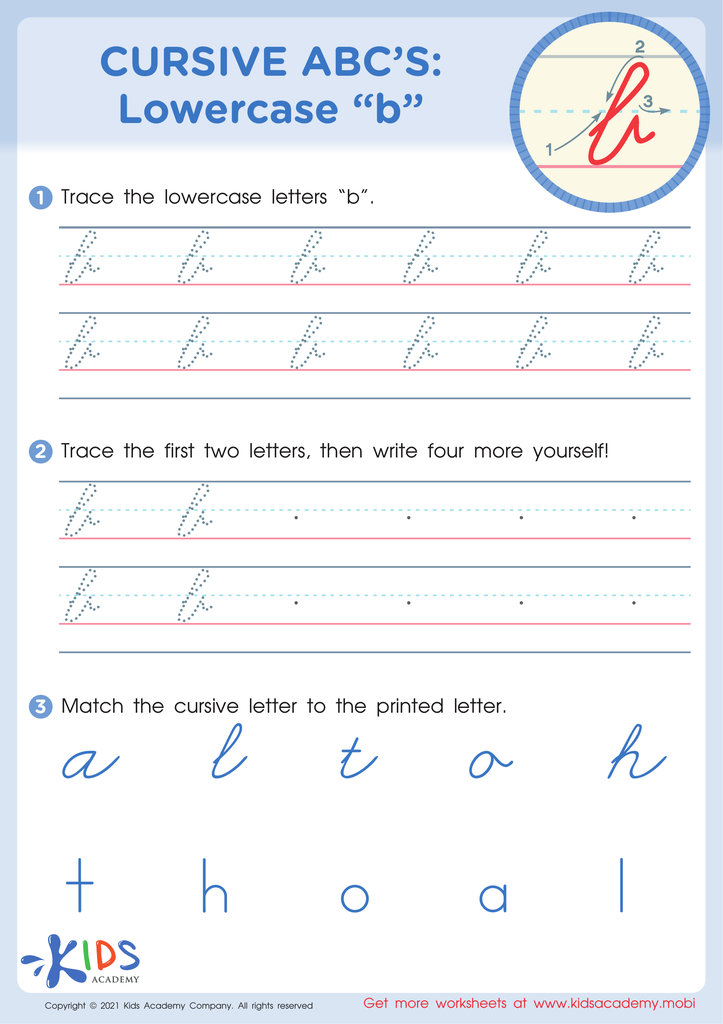

Cursive ABCs: Lowercase b


Cursive ABCs: Uppercase A
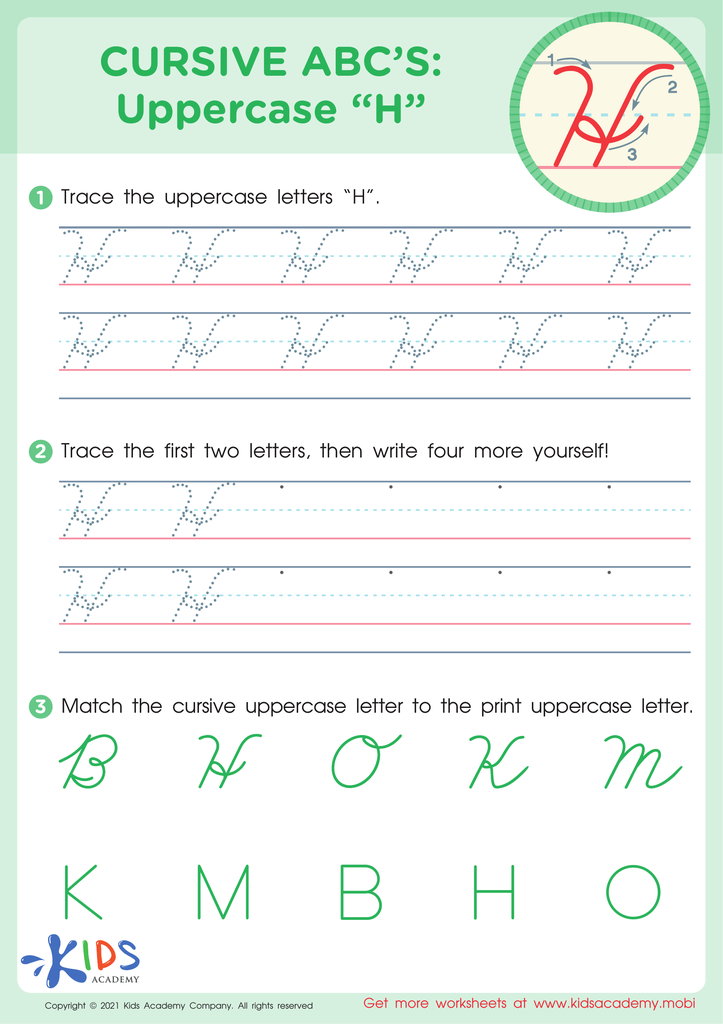

Cursive ABCs: Uppercase H
Alphabet recognition of cursive letters is essential for 9-year-olds as it reinforces their understanding of handwriting, a crucial skill for academic success. At this age, children are transitioning to more complex writing tasks that require not only the ability to print but also to communicate clearly and effectively in a cursive style.
Cursive writing enhances fine motor skills and encourages a fluid writing style, which can increase writing speed and improve overall legibility. Furthermore, cursive writing can help children with learning differences, such as dysgraphia, by providing a different method of expression that may feel more natural and less labor-intensive than printing.
Additionally, understanding cursive letters allows children to read historical documents, personal letters, and other materials written in cursive, fostering a connection to the past and various cultural contexts. By promoting alphabet recognition of cursive letters, parents and teachers help build confidence in children’s writing capabilities, ensuring they can navigate both academic and real-world scenarios effectively. This foundational literacy skill is not only about writing but also about flourishing in life beyond the classroom.




















